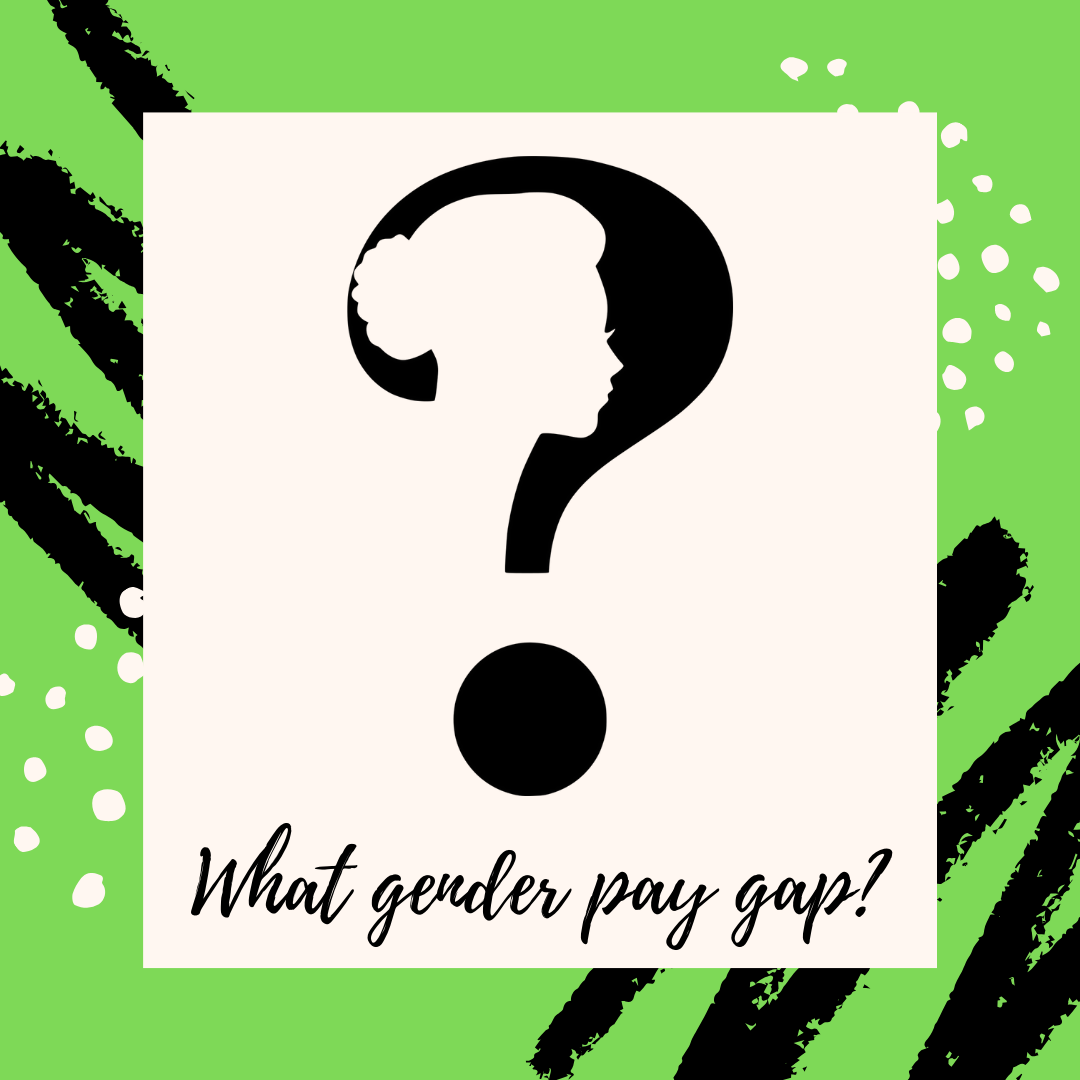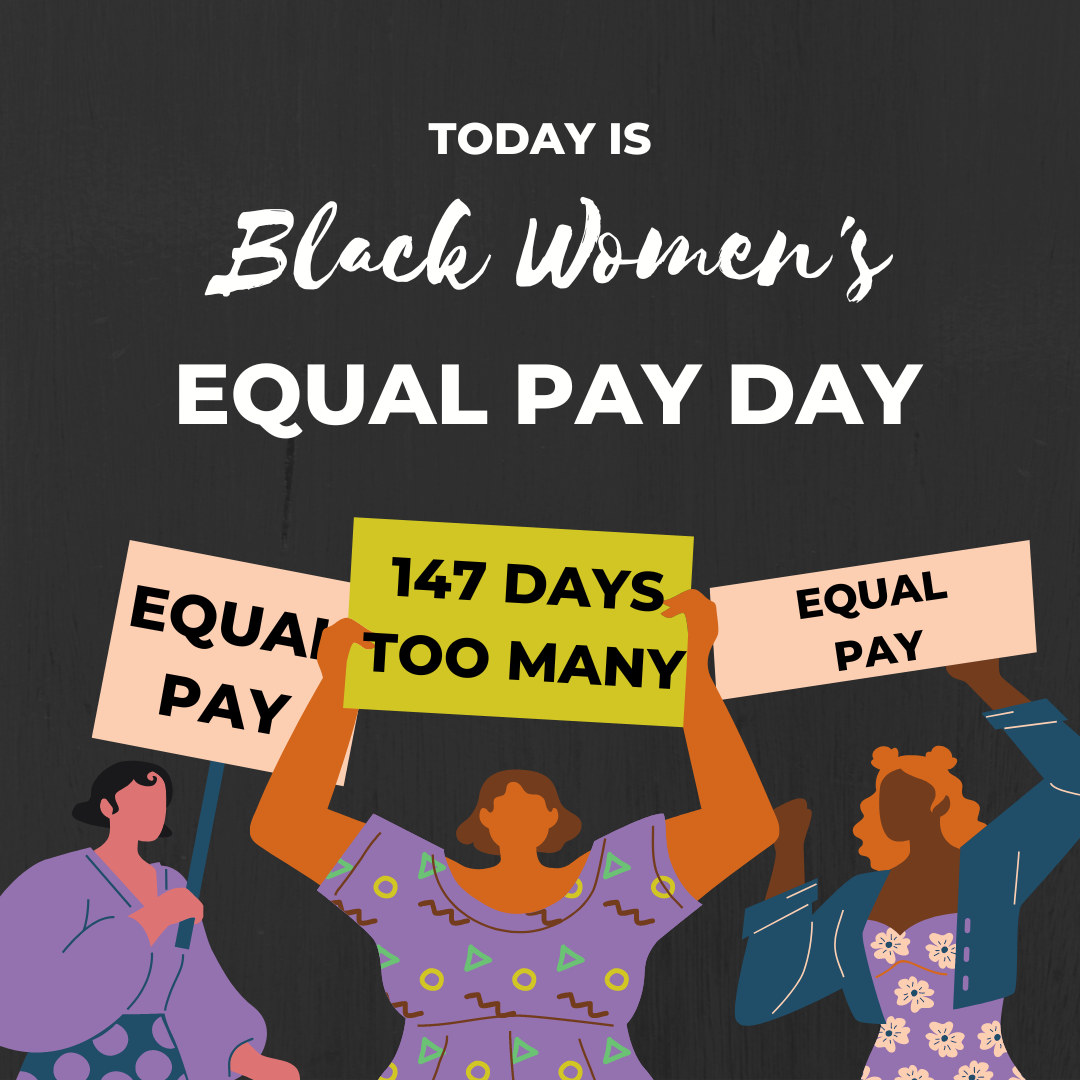Say “gender pay gap” and you’ll hear a bunch of different things.
Some people think it’s a relic. The gender pay gap happened to your mom, they say, back when she joined her fellow female co-workers in the steno pool.
Some people think it’s still present, but it’s not a problem. So what if all those “caring professionals” get underpaid (the vast majority of them women)? They’re getting so much job satisfaction, and they’re going home to partners who make more money.
Some people think it doesn’t exist. When you adjust for child-rearing, they say, it’s no longer there. There are more women than ever in high-powered corporate roles, in STEM fields, in academia. Some people think it’s not an actual gender gap; it’s a “childcare penalty.” And it could just as well be a paternity penalty; therefore, it’s not a problem, right?
Let’s look at each of these claims through an intersectional lens.
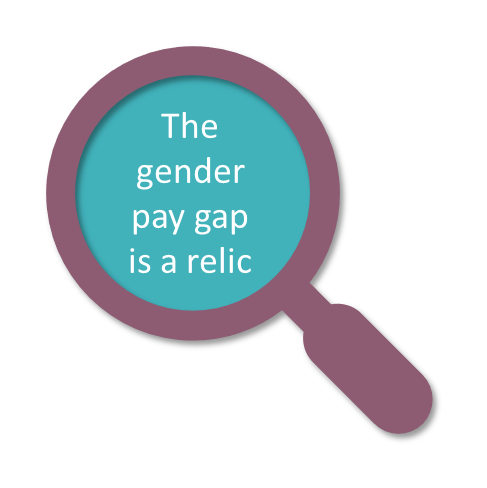
It’s a relic…
So, the gender pay gap doesn’t exist anymore because women are holding more high-powered jobs than they did in the 1960s, 1970s and 1980s.
That’s true.
But what about those women who held those less lucrative jobs? Women of too many generations that missed out on developmental opportunities
at work. They weren’t even considered for those opportunities. Currently, they may have smaller retirement nest eggs.
This is where age and gender intersect.
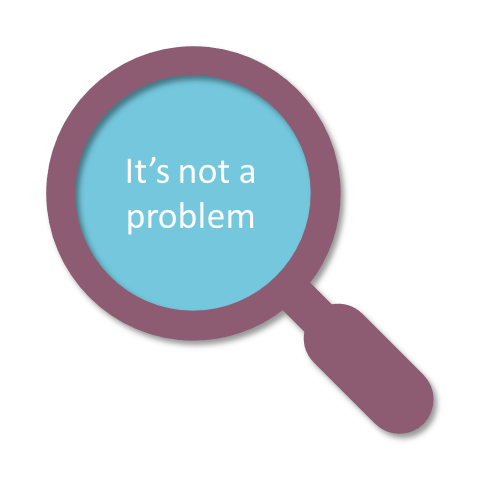
It’s not a problem…
The so-called caring professions – nurses, caregivers, educational assistants, social workers, administrative professionals, and many more – are predominantly occupied by women. Whether through failure of imagination or just plain sexism, society has failed to attach an appropriate monetary value to these services. Apologists for the lower wages point out that there’s no ROI (return on investment) to cleaning a care home or changing diapers. Except there is – it’s just very complicated
to plot out because it’s not an immediate output, like creating a piece of software. It’s a long-term, downstream outcome with high impact for society. We need dedicated economists to figure this one out.
This is where socioeconomics, race, nationality, and gender intersect.

It doesn’t exist
There have never been more women in academia, in STEM fields, in high-powered roles at organizations. Women are running the world and getting paid for it.
But if you plot the earnings curve for a woman who has a baby, the story is different. Women who go on maternity take a big pay hit. Not only do they lose earnings for the time they’re away; they lose opportunities
because they don’t have the same flexibility for the 60-hour work weeks that non-parents do. Their priorities are inevitably different, and that costs them money.
The earnings curve for men who have children doesn’t show nearly the same pay hit.
This is the intersection of age, socioeconomics, disability, and gender.
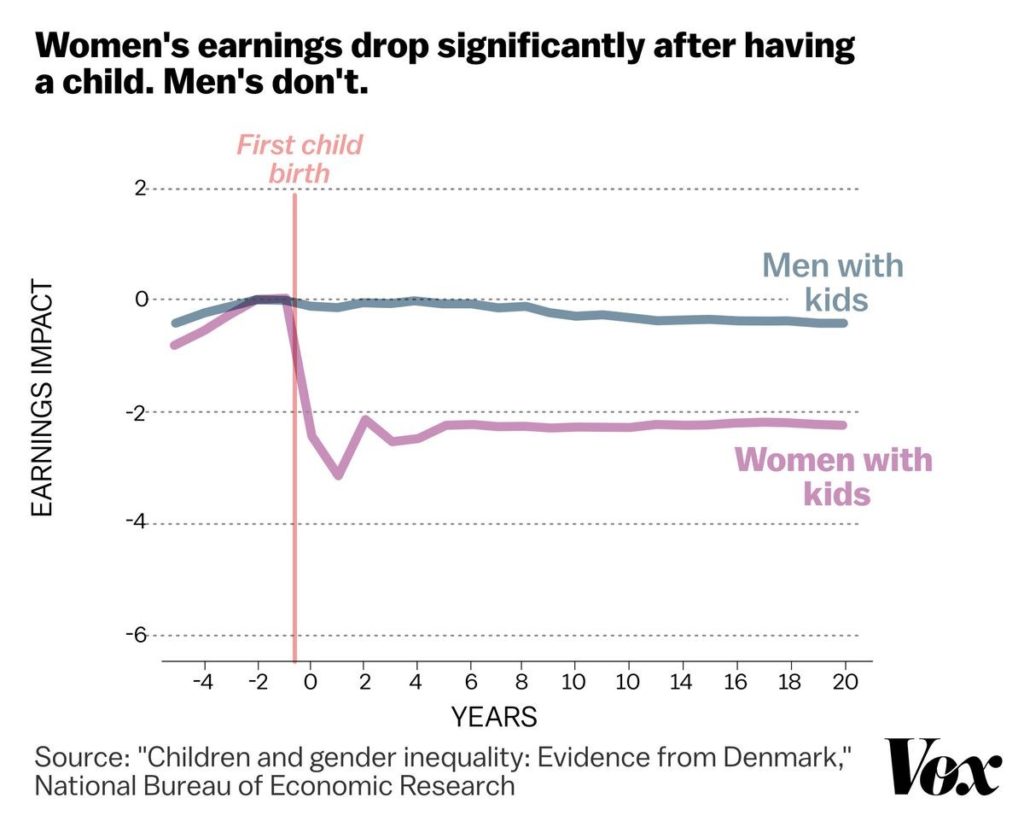
What about the intersection between gender and race/nationality?
Now that we’ve spent some time talking about the gender gap, let’s take a look at how race/nationality plays a role in widening that gap. For women of colour there is a gap within the pay gap.
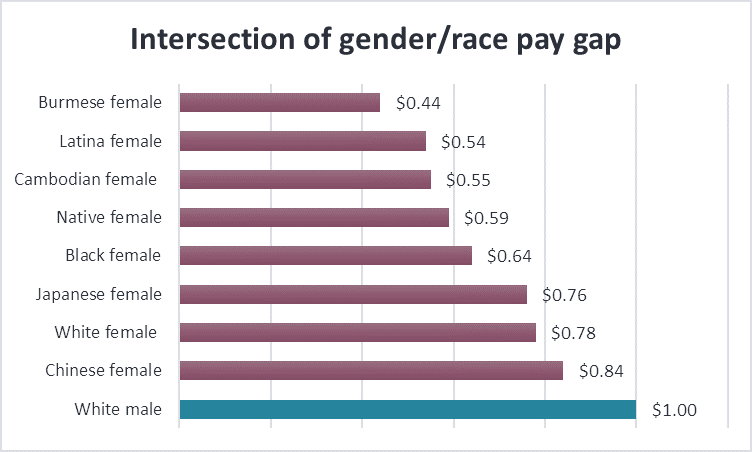
Did you know that most data looking at pay gaps for women don’t even include Indigenous women? It’s true. Looking at the stats that do get collected for various racial groups, it becomes evident that race plays a big role in the pay gap. For example, White female high school dropouts earn more money than Black or Latina post-graduates! In fact, even though StatsCan showed White women of core working age were less likely to hold a university degree than visible minority women of core working age (27% vs. 40%), White women earn more money – but still not as much as White men.
A lot of research has been done on this disparity. Here are a few other interesting facts:
- It’s estimated that it will be another 217 years before we achieve gender parity. Huh?
- $12 trillion could be added to global GDP by 2025 by advancing women’s equality. If women – who account for half the world’s working-age population – do not achieve their full economic potential, the global economy will suffer.
- According to a recent survey, 40% of people believe that both men and women will hire men over women. This is supported by another study that shows that men are 30% more likely to be promoted to a managerial position than women. Additionally, men earn an approximately 24.1% higher base pay than women.
- In 2016, less than 1/5 of all leadership roles were held by women.
- In the past, women were paid less than men, but the Equal Pay Act has changed that. In recent years, there has been an influx of women in the workplace. Employers need to prevent gender discrimination and maintain equality regarding hiring, salary, opportunities, and promotions.
“Balance is not a women’s issue, it’s a business issue… Gender balance is essential for economies and communities to thrive”
– International Women’s Day 2019
What can we do about this?
Until we can find a way to monetize child rearing, millions of women will continue to sacrifice earnings so they can further the species. What does that sacrifice amount to? The market value for stay-at-home parents in the U.S. sits at about $68,875 of non-billable, but extremely critical work.
Until we can figure out how to attach downstream economic value to the caregiving being delivered by millions of women today, that too will continue to contribute to the gender pay gap.
And until we start talking about how these intersections impact women’s lives – without complicating the facts and without getting defensive – we won’t be able to level the playing field.
It’s a public policy issue, all right.
Sources: McKinsey, Vancouver Sun, Conference board, This Way, Statistics Canada, EnvatoTuts , National Review, Quartz, Vox, and Sheryl Sandberg (YouTube)
Diversation Question
Would you be willing to give up some of your salary in order to narrow the pay gap? Share your thoughts and ideas below in the comment sections. Let’s discuss.

